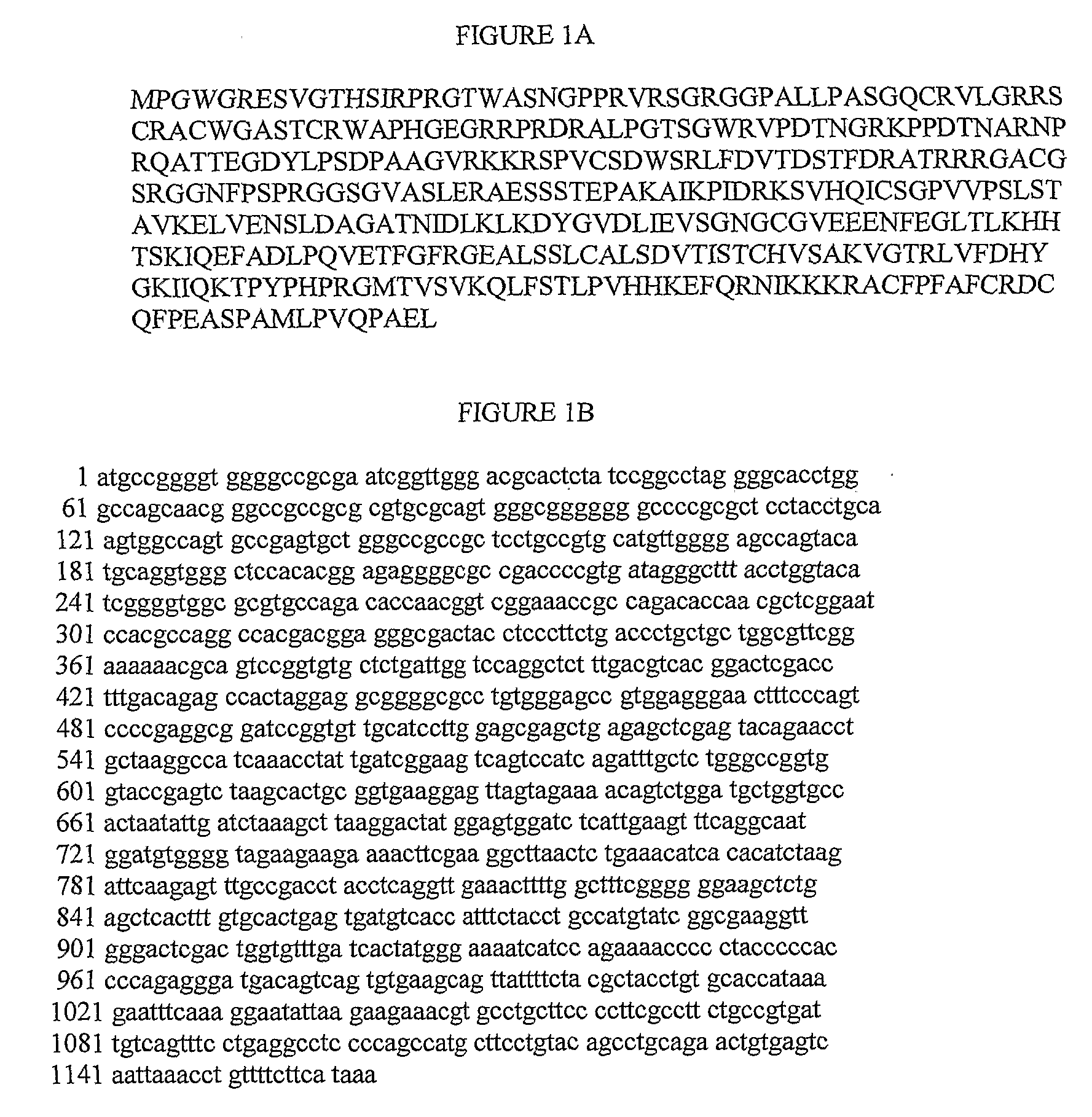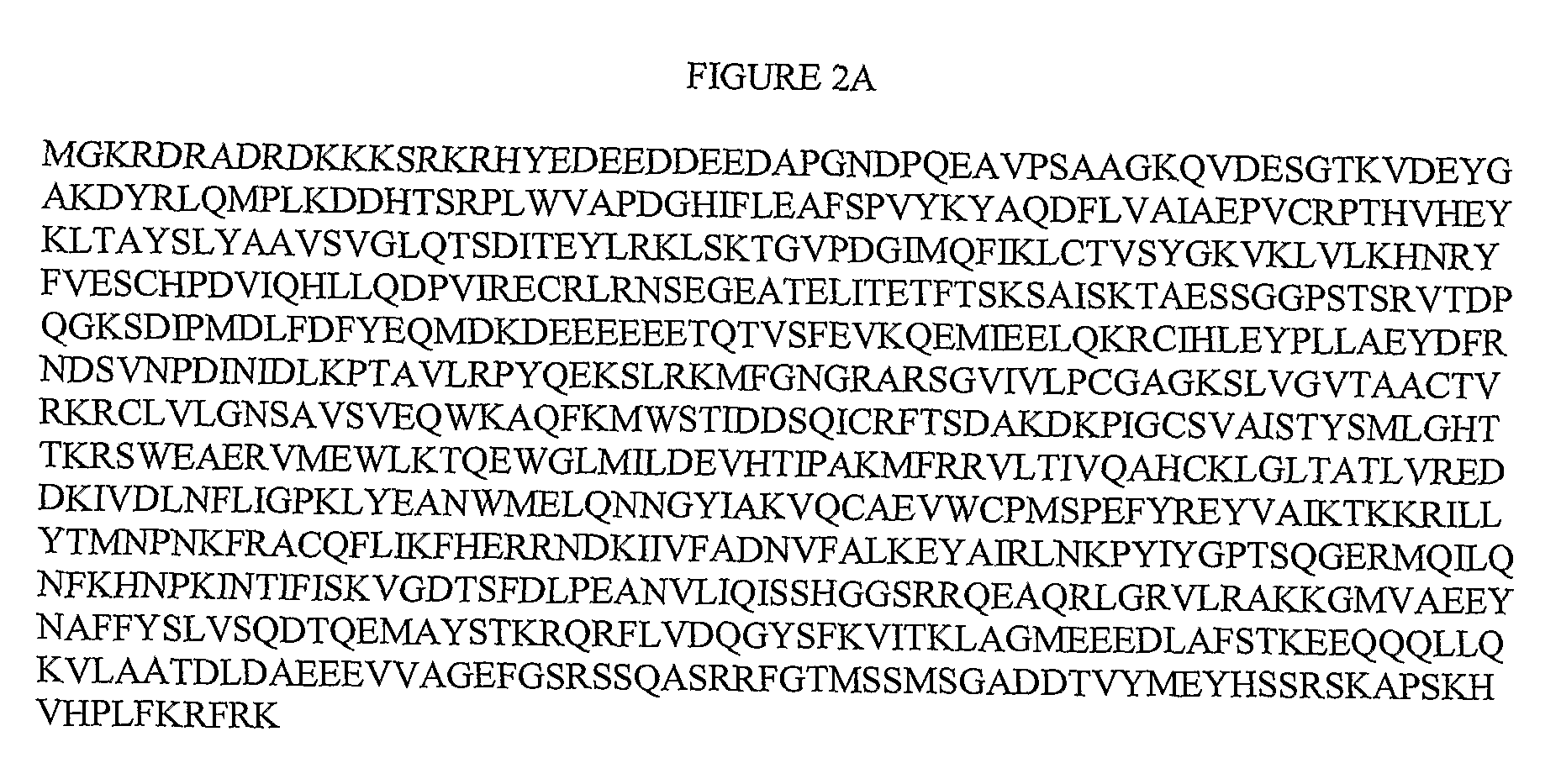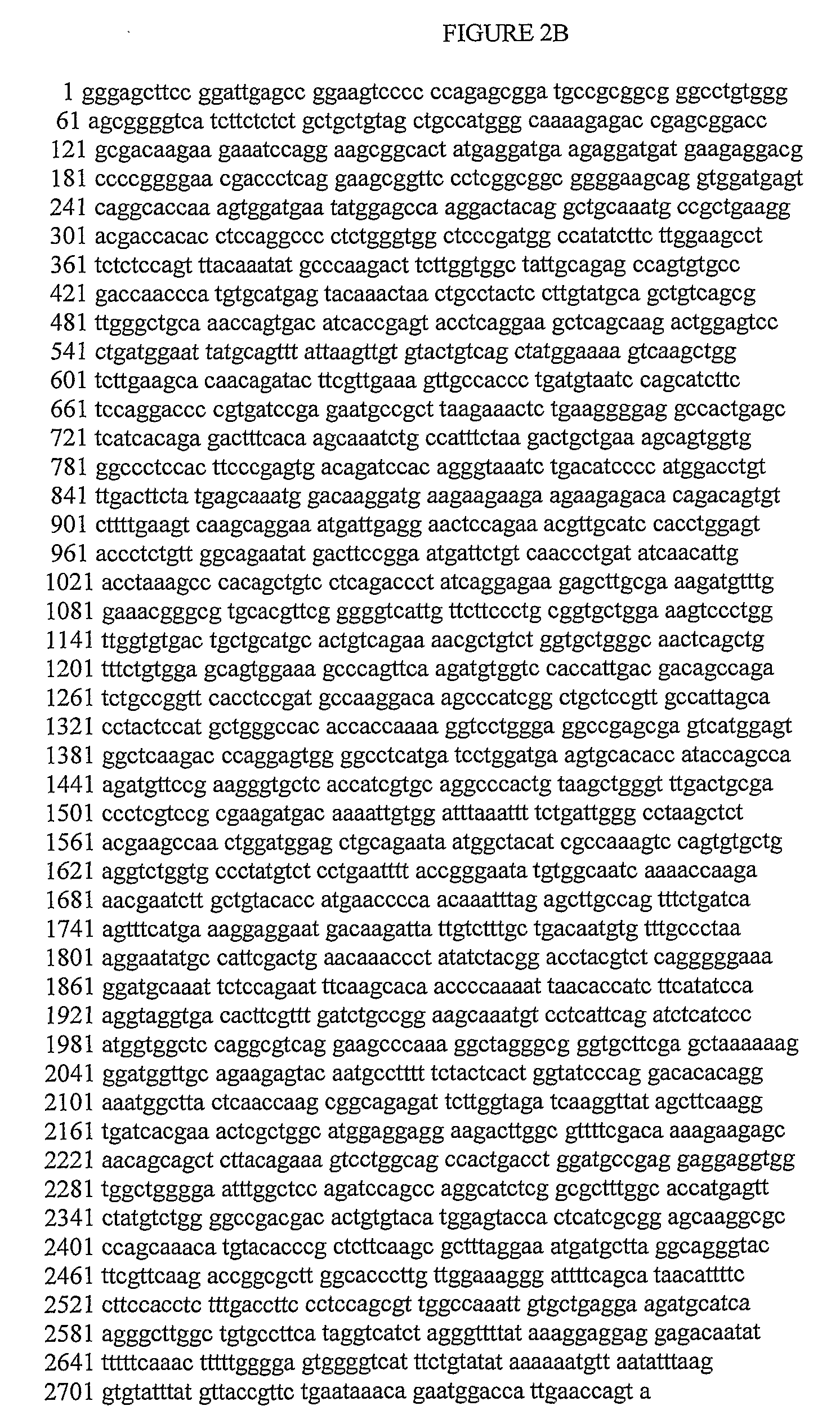Novel HIV Targets
a technology of hiv infection and targets, applied in the field of new hiv targets, can solve problems such as resistance, and achieve the effect of reducing hiv infection
- Summary
- Abstract
- Description
- Claims
- Application Information
AI Technical Summary
Benefits of technology
Problems solved by technology
Method used
Image
Examples
example 1
Identification of DNA Repair Genes Involved in HIV Infection
[0028]The procedure was performed as follows:
Day 1: Plate HeLa (P4 / R5) cells at 2000 cells per well in 4×96-well plates.
Day 2: Transfect HeLa (P4 / R5) cells with siRNA pools as follows:[0029]1. siRNAs will be transfected at a final concentration of 50 nM using a transfection reagent, such as OLIGOFECTAMINE™ reagent (Invitrogen), at a final concentration of 0.5%. Positive and negative control siRNAs are included as follows:[0030]CDK9 (positive control): GUGGUCAACUUGAUUGAGAdTdT[0031]Cyclin T1 (positive control): purchased from Santa Cruz Biotechnology (Cat. No. sc-35144)[0032]Luciferase (negative control): CGUACGCGGAAUACUUCGAdTdT[0033]2. Dispense 66 μL of OptiMEM / well into a sterile 96-well plate, leaving the 12th column empty.[0034]3. Transfer 2 μL of siRNA (resuspended at 10 μM) from each well of the siRNA stock plate into the OptiMEM-containing plates such that the siRNA from well A3 of the mother plate is transferred into ...
example 2
Electronic Counterscreening of siRNA Hits
[0053]A siRNA screen was run in HeLa cells in which the cells were transfected with siRNAs and cell viability was assessed by Alamar Blue staining 72 h post-transfection. Thus, siRNAs that were toxic to HeLa cells in this assay may appear to hit in the infectivity screen simply due to cytotoxicity. For this reason, the siRNA hits from the HIV infection assay were examined for cytotoxic effects in the HeLa cytotoxicity assay.
Results:
[0054]Analysis of the HeLa cytotoxicity data led to the elimination of six hits. The remaining hits of interest are: PMS2L1, RAD52, POLI, TNP1, POLL, CENPF, MSH6, NEIL2, BTG2, DDB2, DCLRE1B, C20orf41 (RTEL), ADPRT (PARP1), RAD51C, POLE, SMC6L1, APEX1, TAF2, OGG1, RUVBL2, RECQL4, TOP2A, ERCC3, RPA2, HMG4L, RBBP8, MLH1, MUS81, MSH4, IGF1R, XRCC4, RAD23B, ANKRD17, NTHL1, POLH, WDR33, DCLRE1A, and PMS1.
example 3
Pathway Mapping Highlights the Base-Excision Repair Pathway
[0055]Genes targeted by siRNAs that hit in the HIV infection screen were analyzed using software that searches a database of gene ontology definitions and reports on gene ontology functions and pathways that are held in common by the query set. Excluding “DNA repair” as a definition, since this was the criteria used to define the gene set in the library, the following definitions were the top ten selections (displayed in Table 1):
TABLE 1OverlapSet GeneSimilar Setp-valueExpectationgene countcountInput identifiersDNA0014110RUVBL2; POLI; POLL; MSH6;recombinationMLH1; WDR33; RAD51C;RAD52; RPA2; XRCC4; MUS81DNA-dependent0013149POLI; ANKRD17; MSH6;DNA replicationHMGB2; MLH1; PMS1; PMS2L1;POLE; POLH; RAD23B; RECQL4DNA-(apurinic or0.0000000000090.000000032510POLI; NEIL2; APEX1;apyrimidinic site)NTHL1; OGG1lyase activityDamaged DNA0.000000000160.0000000551574DDB2; ERCC3; SF3B3; ANKRD17;bindingMSH4; OGG1; POLE; POLH;RAD23B; RAD51C; RP...
PUM
| Property | Measurement | Unit |
|---|---|---|
| resistance | aaaaa | aaaaa |
| viral resistance | aaaaa | aaaaa |
| time period | aaaaa | aaaaa |
Abstract
Description
Claims
Application Information
 Login to View More
Login to View More - R&D
- Intellectual Property
- Life Sciences
- Materials
- Tech Scout
- Unparalleled Data Quality
- Higher Quality Content
- 60% Fewer Hallucinations
Browse by: Latest US Patents, China's latest patents, Technical Efficacy Thesaurus, Application Domain, Technology Topic, Popular Technical Reports.
© 2025 PatSnap. All rights reserved.Legal|Privacy policy|Modern Slavery Act Transparency Statement|Sitemap|About US| Contact US: help@patsnap.com



